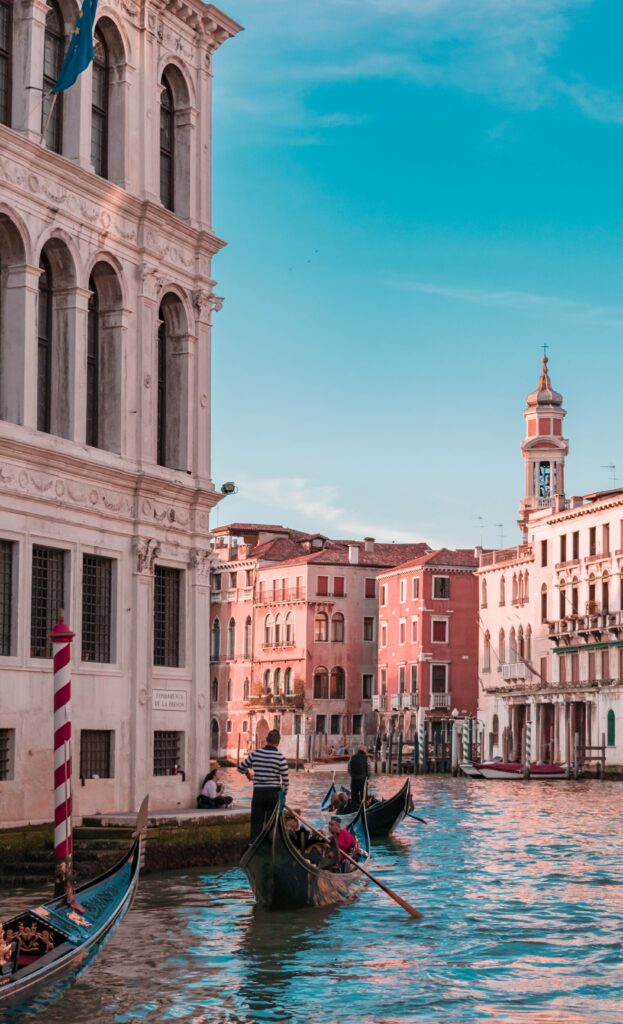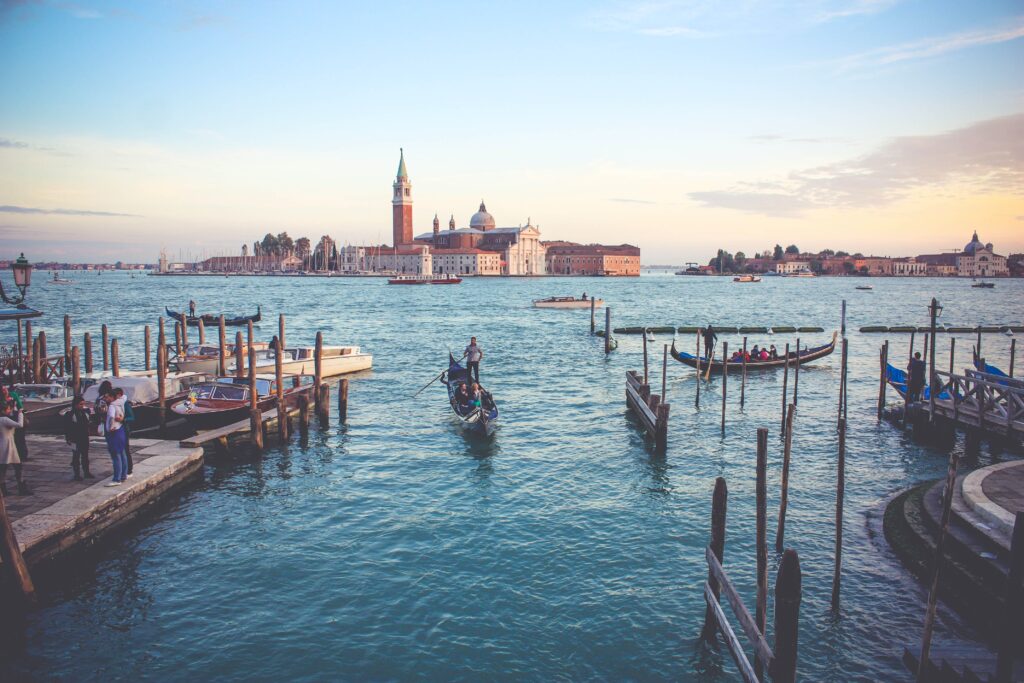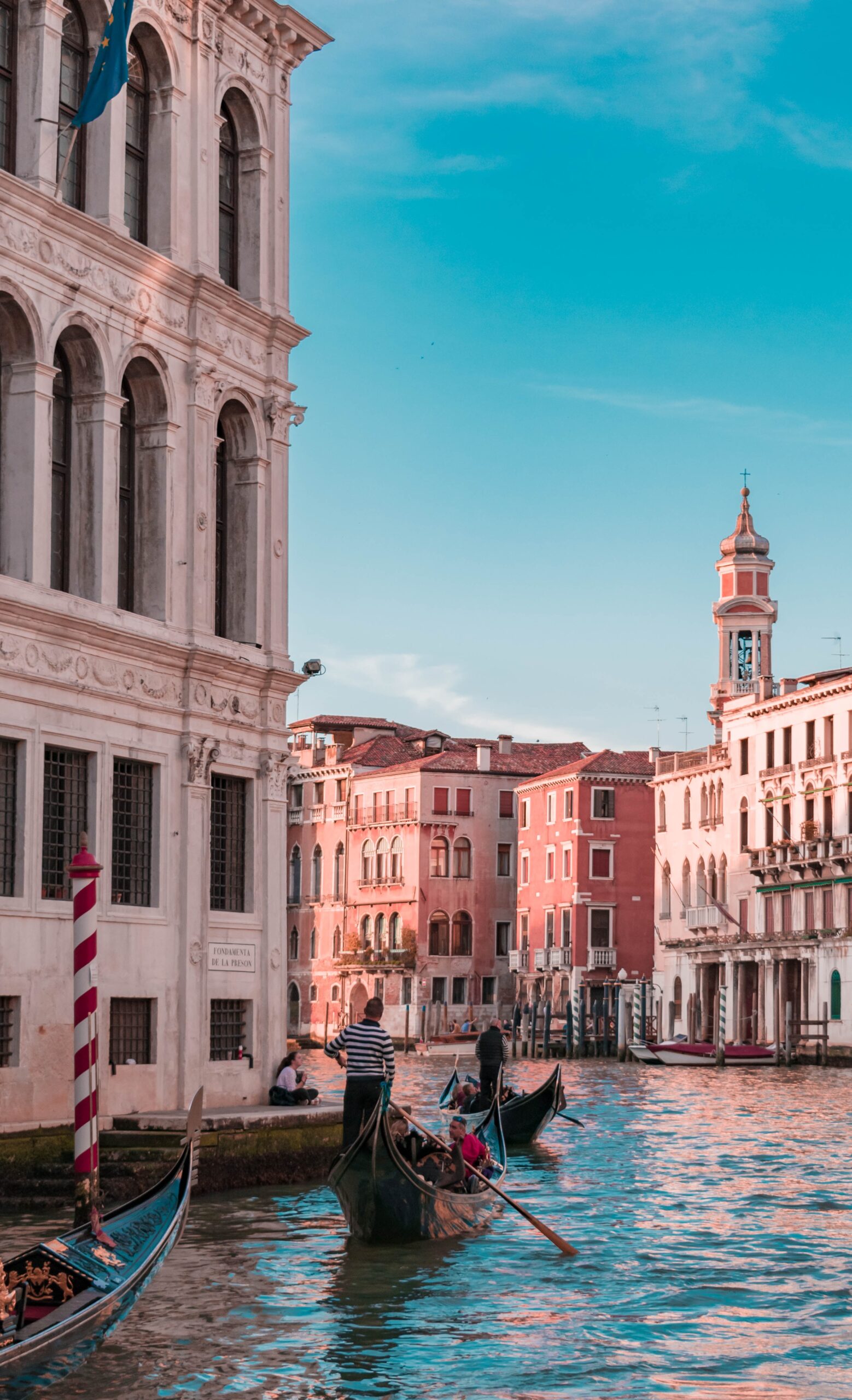Jeffrey Gibson, the Indigenous artist representing the United States at the Venice Biennale, faces the daunting task of raising millions of dollars to complete his highly anticipated exhibition. With the government providing a mere 7.5% of the projected cost, a coalition comprising curators, gallerists, collectors, and philanthropists has come together to secure crucial donations. Gibson’s team has proactively reached out to collectors and foundations, enticing potential donors with enticing perks. While private-sector support is often seen as a strength in this program, it raises ethical concerns for some curators. However, only a select few artists enjoy the support of dealers capable of shouldering the substantial organizing costs associated with a U.S. Pavilion. Despite facing additional challenges posed by the COVID-19 pandemic and a delayed selection cycle, the commissioners remain optimistic that they can raise the necessary funds within the given time frame.

Overview of the Venice Biennale Exhibition
Introduction to the Venice Biennale
The Venice Biennale is one of the most prestigious art exhibitions in the world, held every two years in Venice, Italy. It serves as a platform for artists from around the globe to showcase their work and engage in dialogues about contemporary art. The exhibition attracts thousands of visitors, including art professionals, critics, collectors, and enthusiasts.
Purpose and significance of the exhibition
The Venice Biennale exhibition aims to promote artistic expression, foster cultural exchange, and push artistic boundaries. It provides an opportunity for artists to gain international recognition and contribute to the global art discourse. The exhibition serves as a barometer for contemporary art, reflecting societal and cultural shifts.
Jeffrey Gibson as the representative artist for the United States
Jeffrey Gibson, an Indigenous artist, has been selected as the representative artist for the United States at the Venice Biennale. His work explores themes of identity, cultural heritage, and the intersections of Indigenous and Western cultures. Gibson’s participation in the exhibition is significant as it highlights the diversity and richness of artistic expressions in the United States.
Funding Challenges for the Exhibition
Limited government support
The Venice Biennale exhibition relies on financial contributions from both the government and private sectors to cover its expenses. However, government support for the exhibition is limited, providing only 7.5% of the projected cost. This lack of substantial government funding puts significant pressure on artists and commissioners to secure private donations to finance their participation.
Increased costs of the exhibition
Over the years, the cost of representing the United States at the Venice Biennale has steadily increased. The expenses include exhibition production, artist fees, transportation, installation, and promotional activities. These rising costs make it challenging for artists and their teams to raise the necessary funds to present their work adequately.
Private-sector support and ethical concerns
Private-sector support plays a crucial role in bridging the funding gap for the exhibition. However, relying heavily on private donations raises ethical concerns for some curators. They worry that the influence of wealthy collectors and philanthropists may compromise artistic freedom and diversity, as their preferences and tastes could shape the selection process and curation of the exhibition.
Role of curators, gallerists, collectors, and philanthropists in securing donations
To overcome funding challenges, a coalition consisting of curators, gallerists, collectors, and philanthropists collaborates to secure donations for the Venice Biennale exhibition. These individuals leverage their networks and relationships with potential donors to raise funds. Their involvement is vital in garnering financial support and ensuring the exhibition’s success.
Impact of the COVID-19 pandemic and late selection cycle
The COVID-19 pandemic has presented unprecedented challenges for the Venice Biennale exhibition. The global health crisis has disrupted travel, restricted public gatherings, and strained economies – all of which directly impact the exhibition’s planning and implementation. Additionally, a late selection cycle at the State Department has added further constraints, leaving less time for artists and commissioners to secure the necessary funds.

Jeffrey Gibson’s Efforts to Raise Donations
Reaching out to collectors and foundations
Jeffrey Gibson and his team have been actively reaching out to collectors and foundations to secure donations for his exhibition. By leveraging personal connections and professional networks, they aim to engage potential donors who have a vested interest in supporting contemporary art and diverse cultural expressions. These outreach efforts require careful planning, personalized communication, and a compelling case for support.
Offering perks in return for donations
To incentivize donations, Gibson’s team has come up with tailored perks to offer to donors. These perks can range from exclusive access to private events, artist studio visits, limited edition artworks, and acknowledgment in exhibition materials. Providing tangible benefits to donors not only acknowledges their support but also enhances their relationship with the artist and their work.
Importance of private contributions for completing the exhibition
Private contributions play a crucial role in completing the exhibition for Jeffrey Gibson at the Venice Biennale. Without these donations, Gibson and his team may face severe financial constraints, limiting their ability to produce and present their artwork. Private contributions offer the necessary resources to cover expenses related to artwork production, logistics, installation, and promotion, ensuring a successful and impactful exhibition.
Importance of Private-Sector Support
The role of dealers in supporting artists
Private-sector support, notably from dealers, plays a vital role in supporting artists’ participation in the Venice Biennale. Dealers who are willing and able to invest in their artists’ exhibitions cover various expenses, including production, transportation, promotion, and even the construction of pavilions. These dealers contribute not only financially but also strategically, providing guidance and expertise in navigating the complexities of the art world.
Comparison to government support levels
The limited government support for the Venice Biennale exhibition highlights the importance of private-sector involvement. While government support covers only a fraction of the exhibition’s cost, private contributions fill the funding gap and enable artists to fully realize their vision. The disparity in financial backing underscores the significance of private-sector support and the need for continued collaboration between the public and private sectors.
Ethical considerations and debates
Private-sector support raises ethical considerations and debates within the art community. Some argue that the influence of wealthy collectors and philanthropists may compromise artistic integrity and diversity of voices. Questions arise regarding whether private funding favors certain artists or narratives, leading to a lack of representation and marginalization of underrepresented groups. Striking a balance between financial support and artistic freedom becomes a critical challenge for artists and exhibition organizers.
Balancing financial support and artistic freedom
Artists and curators face the challenge of balancing financial support with artistic freedom. Private-sector support often comes with expectations and demands from donors, which may impact the creative process and the ability to express unconventional ideas. Artists must carefully navigate these dynamics, ensuring that their artistic visions are not compromised while cultivating beneficial relationships with donors and supporters.

Historical Context of the Venice Biennale Exhibition
Evolution of the exhibition over the years
The Venice Biennale exhibition has a rich history that has evolved over the years. Since its inception in 1895, the exhibition has grown in scope and significance, attracting artists and visitors from all over the world. The exhibition has adapted to changing artistic trends and societal developments, reflecting the dynamic nature of contemporary art.
Importance of representing the United States
Being selected as the representative artist for the United States at the Venice Biennale holds great prestige and importance. It provides a platform for American artists to showcase their work on an international stage, reaching a diverse audience of art professionals and enthusiasts. Representing the United States also allows artists to contribute to cultural diplomacy and promote an understanding of American art and culture.
Challenges faced by previous representatives
Previous representatives of the United States at the Venice Biennale have faced various challenges in securing funding for their exhibitions. Limited government support, rising costs, and the competitive landscape of fundraising have posed significant obstacles. The experiences of past representatives highlight the ongoing need for collaboration, creativity, and perseverance in raising the necessary funds for the exhibition.
The Role of Commissioners in Fundraising
Responsibilities and goals of the commissioners
Commissioners are tasked with overseeing the organization and representation of the United States at the Venice Biennale. Their responsibilities include selecting artists, securing funding, coordinating logistics, and ensuring a successful exhibition. The primary goal of the commissioners is to create an engaging and meaningful artistic experience for visitors while promoting American art and culture.
Confidence in raising the necessary funds
Despite the funding challenges, commissioners of the exhibition express confidence in their ability to raise the necessary funds. They leverage their networks, engage in targeted outreach, and tap into the collective power of the art community to secure private contributions. Their determination and belief in the significance of the exhibition drive their efforts in overcoming financial obstacles.
Strategies employed by the commissioners
Commissioners employ various strategies to raise funds for the Venice Biennale exhibition. They engage in personal meetings with potential donors, organize fundraising events, and establish partnerships with galleries, museums, and cultural institutions. By utilizing creative and proactive approaches, commissioners maximize their chances of securing the financial support needed to realize the exhibition.

Perks Offered for Donations
Description of offered perks
To incentivize donations, Jeffrey Gibson and his team offer tailored perks to donors. These perks can include exclusive access to exhibition previews, private tours guided by the artist, limited edition artworks, and personalized experiences related to the exhibition. Each perk aims to provide donors with a unique, behind-the-scenes look at the exhibition while acknowledging their support.
Incentives for potential donors
The perks offered to potential donors serve as incentives to encourage their financial support. Donors are enticed by the opportunity to engage directly with the artist, gain access to exclusive events, and enhance their art collections with limited edition works. These incentives aim to foster a sense of connection and appreciation between the artist and donor, recognizing the vital role donors play in making the exhibition a reality.
Impact of perks on donation amounts
The perks offered to donors can have a significant impact on the amounts donated. Donors who feel a strong connection to the artist’s work and exhibit greater affinity for the exhibition are more likely to contribute higher sums. The perceived value of the offered perks, coupled with the passion and enthusiasm generated by the exhibition, contributes to increased donation amounts.
Challenges Faced by Jeffrey Gibson’s Team
Financial implications of the exhibition
The financial implications of the Venice Biennale exhibition are substantial for Jeffrey Gibson and his team. The costs associated with artwork production, transportation, installation, promotion, and miscellaneous expenses can quickly escalate. Failing to secure sufficient funding can jeopardize the successful delivery of the exhibition and hinder Gibson’s ability to fully realize his artistic vision.
Lack of sufficient government funding
The limited government support for the exhibition places additional financial burdens on artists like Jeffrey Gibson. Relying primarily on private donations creates significant challenges in ensuring the necessary resources are available. Gibson’s team must seek alternative funding sources and engage in strategic collaborations to bridge the gap left by insufficient government support.
Struggles caused by the COVID-19 pandemic
The COVID-19 pandemic has deeply impacted the planning and execution of the Venice Biennale exhibition. Travel restrictions, social distancing measures, and economic uncertainties have disrupted fundraising efforts and the exhibition’s logistics. Jeffrey Gibson’s team must navigate these challenges while adhering to health and safety protocols, adapt to virtual engagement strategies, and ensure the exhibition’s viability given the evolving circumstances.
Time constraints and late selection cycle
A late selection cycle at the State Department has added pressure and time constraints for Jeffrey Gibson’s team. This compressed timeframe puts them at a disadvantage in securing donations, as potential donors may have already allocated their resources elsewhere. The limited time available necessitates swift and focused fundraising efforts to meet the financial requirements of the exhibition.

Collaboration and Support within the Art Community
Coalition of curators, gallerists, and philanthropists
The success of the Venice Biennale exhibition rests heavily on the collaboration and support of curators, gallerists, collectors, and philanthropists. This diverse coalition works together to secure donations, advocate for artists, and promote the exhibition. Their shared goal of advancing contemporary art and culture unites them in collective efforts to overcome funding challenges.
Collective efforts to secure donations
Collective efforts are crucial in securing donations for the Venice Biennale exhibition. Curators, gallerists, collectors, and philanthropists pool their resources, connections, and influence to identify potential donors and engage them in meaningful conversations about supporting the exhibition. These collective efforts multiply the impact of individual initiatives, increasing the likelihood of success in raising the necessary funds.
Impact of collaboration on success
Collaboration within the art community significantly contributes to the success of the Venice Biennale exhibition. By fostering a supportive network, sharing resources, and leveraging collective expertise, artists and exhibition organizers strengthen their fundraising efforts. Collaboration enables access to wider donor networks, diverse perspectives, and strategic guidance, enhancing the exhibition’s overall impact and ensuring a more robust and sustainable arts ecosystem.
Conclusion and Future Prospects
Summary of the funding challenges
The Venice Biennale exhibition faces numerous funding challenges, from limited government support to rising costs and the ethical concerns surrounding private contributions. Overcoming these challenges requires the concerted efforts of artists, commissioners, curators, gallerists, collectors, and philanthropists. The financial implications of the exhibition, exacerbated by the COVID-19 pandemic and a late selection cycle, further amplify the need for creative and collaborative fundraising strategies.
Determination and confidence in completing the exhibition
Despite the funding challenges, Jeffrey Gibson’s team remains determined and confident in completing the exhibition at the Venice Biennale. Through strategic outreach, engagement with potential donors, and the offering of compelling perks, they aim to secure the necessary funds within the given timeframe. The passion for Gibson’s work and the belief in the transformative power of the exhibition fuel their perseverance and commitment to its success.
Long-term implications for government support
The funding challenges faced by artists, such as Jeffrey Gibson, shed light on the long-term implications for government support in the arts. The limited financial assistance provided by the government highlights the need for greater investment in cultural initiatives, including exhibitions like the Venice Biennale. Recognizing the societal and economic value of the arts, increased government support can enhance accessibility, diversity, and sustainability within the arts sector.

